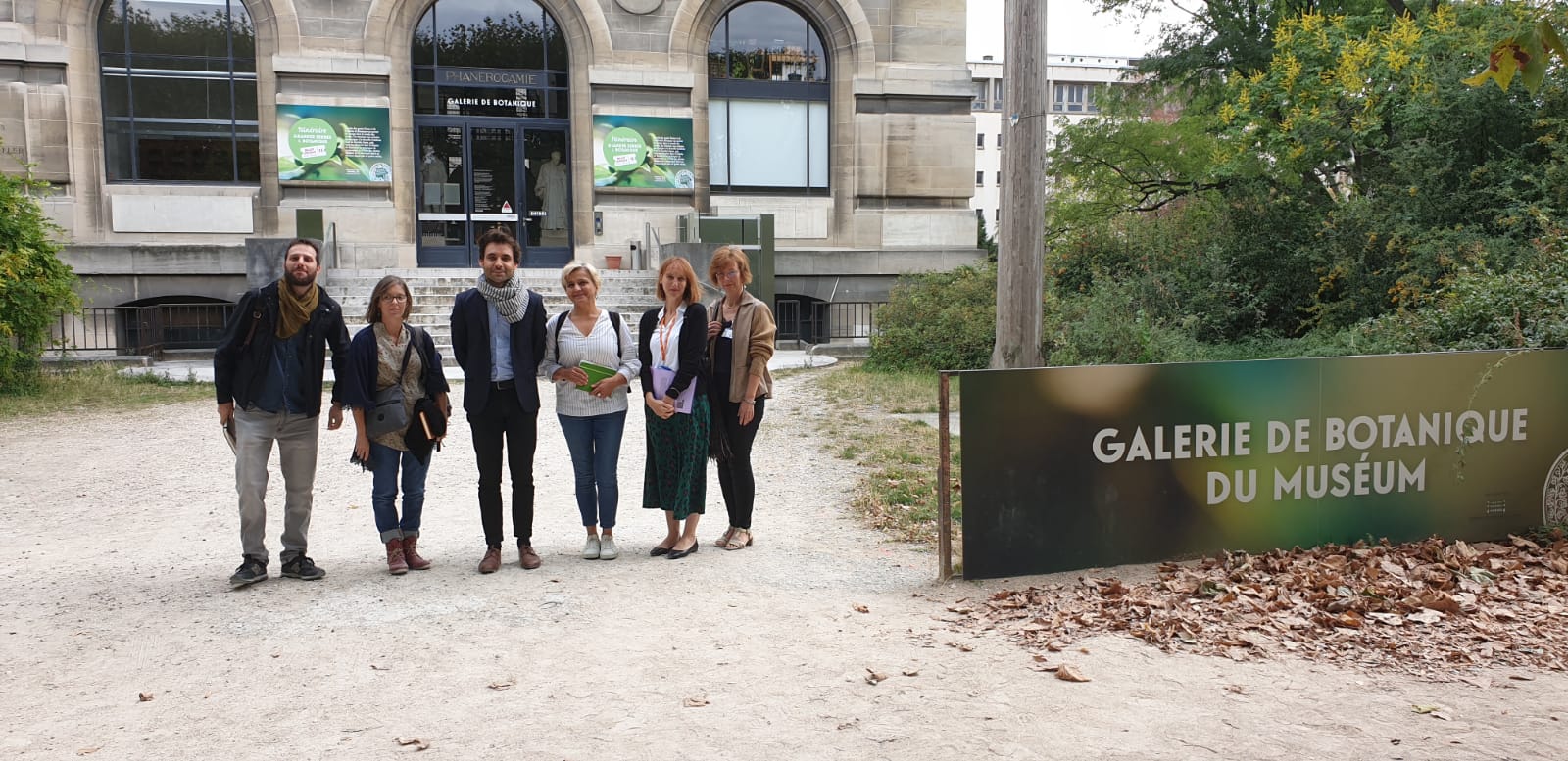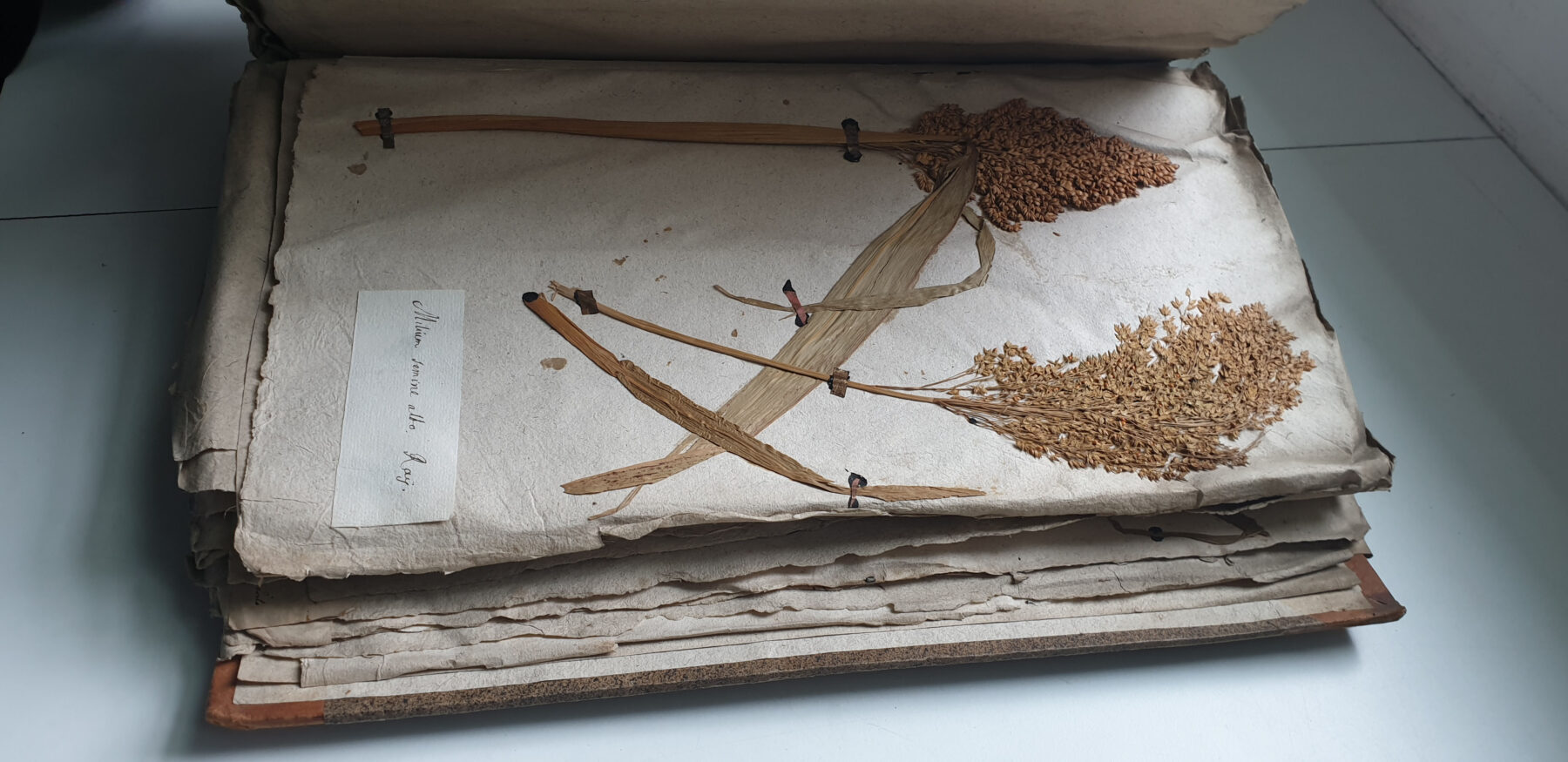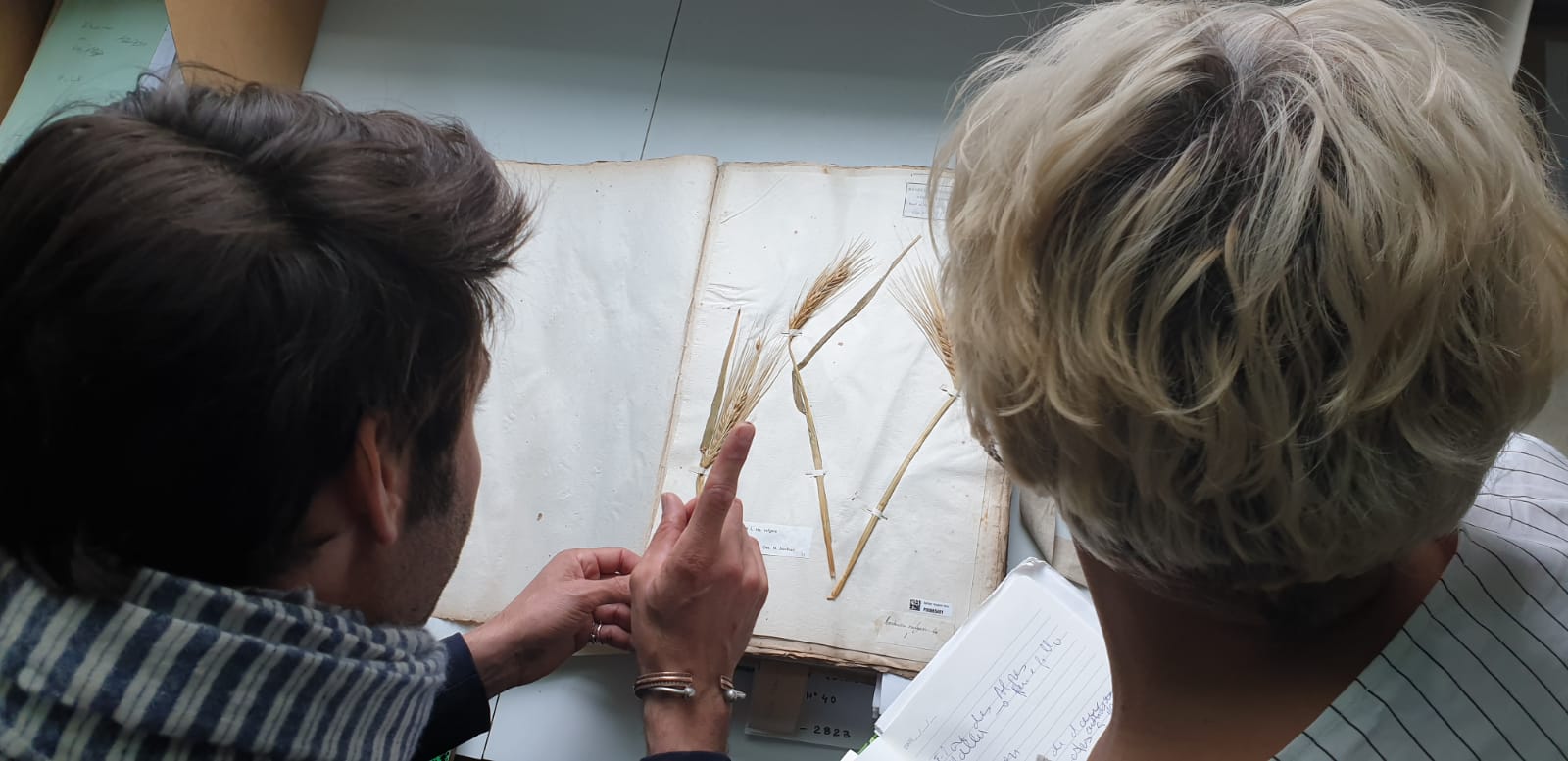
ReSEED Team had the opportunity to explore the French National Museum of Natural History in a working visit that took place on September 9, 2019. The investigators were guided into important parts of this historical institution, created in 1635 as a royal garden for medicinal and educational purposes and became a museum in 1793. The goal was to look for specimens and other registers concerning cultivated plants from Portugal and Spain.
For centuries, the Iberian Peninsula drew the attention of naturalists from different parts of Europe and the world once it was the main gateway to many seeds that came from the new worlds to the old continent. French botanists were also visitors and some of the results of the trips to observe plants in Portugal and Spain can be seen in the herbarium and, mainly, in the historical collections, which are stored separately and comprise around 150,000 specimens. Various botanists founded their natural history cabinets there, gathering samples and important notes. Joseph Pitton de Tournefort was one of them, named botanist at the Jardin du Roi in 1683. Part of his collection came from the Iberian Peninsula.
In addition, ReSEED investigators learned more about the Herbonauts, a citizen science initiative that proposes the participation in the creation of a scientific database from the millions of photos of the Herbarium´s plants. By analysing the specimens and their labels, citizens can help identify when, where, and by which botanists they were harvested. The team also met researchers from the Museum currently working in the field of human sciences and archaeobotany.
“It has been a very productive visit. In addition to knowing the collections, we´ve discussed research methods, as well as the limitations and possibilities of historically identifying the varieties of cultivated plants, which is essential for ReSEED,” said the principal investigator Dulce Freire.



